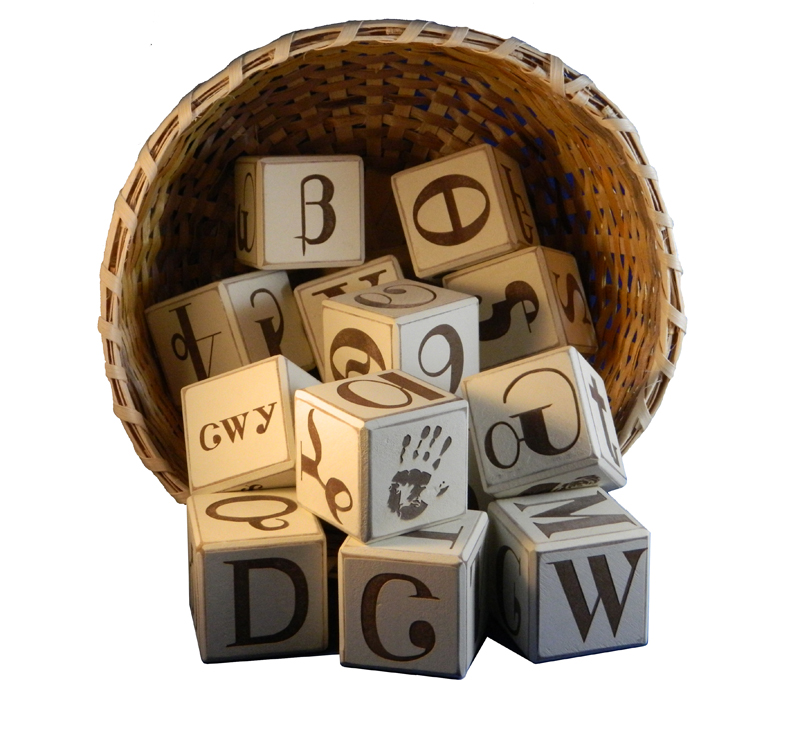While taking a Cherokee language class in 2011, Christy Long looked for supplemental items to help her learn the language. Not finding what she was looking for, she decided to make something. Using the idea of alphabet blocks, she created syllabary blocks by hand burning a syllabary character onto each side of a wooden block. Looking at her creation, Christy realized they were not only useful for learning they were art.
Christy’s blocks, like other Native American art, are rooted in functionality. The items that were historically part of everyday Native life are now created as representations of Cherokee culture and sought-after by art collectors and enthusiasts. But it’s not just the baskets and pottery of our ancestors; today Native art encompasses a wide spectrum of artistic mediums, and is generating economic impact in Native communities. In July 2013, First Peoples Fund in Rapid City, South Dakota, published Establishing a Creative Economy: Art as an Economic Engine in Native Communities. The study found native artworks are an “…artistic expression that preserve a way of life, maintain cultural identity and perpetuate traditional spiritual values; at the same time, their creation demonstrates the economic development potential of Native cultural assets.”
Art drives native economies by growing leaders, increasing wealth among low-income families, changing the underlying causes of poverty, and providing a way to sustain cultural traditions and practices. While Native art is firmly rooted in Cherokee culture, its not as widely lauded for its influence to our economy. This is evident in the retail offerings found in the majority of Cherokee gift shops as well as in the standard of living of many artists who struggle to find a viable market for their work. Visitors to Cherokee come looking for their version of Native, oftentimes not being exposed to the rich history and beauty of Cherokee and Southeastern Native art.
Today, Christy owns Nativologie, a company that provides traditional and contemporary southeastern Native products using sustainable materials. She sells at local arts events and powwows, and in a few retail shops, but supporting her family is difficult. The time she spends selling means she isn’t creating, and creating is what artists do best.
Authethenticallycherokee.com was created for artists like Christy. On this site you will find authentic Cherokee made products that illustrate both the culture of our Cherokee ancestors and the lifestyle of the Cherokee today. We invite you to take in and enjoy the art as we tell the story of the Eastern Band of Cherokee.
Sgi





